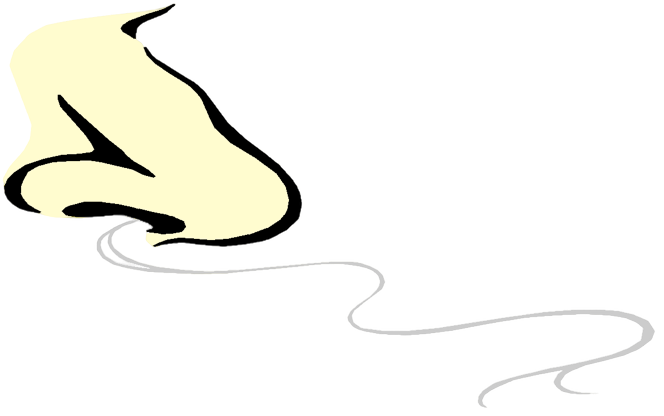Essential Oils and Plant Extracts as Functional Fragrance, Neuroscience, and Bioactive Therapy
Are we there yet? It’s a bit like living in the future. Every time I see a new trend headline—functional fragrance, bioactive, neurocosmetics—I get a hit of déjà vu. But, no, it’s just somebody giving a clever name to something I, and many other plant-based therapists, have been doing for decades.
They call it innovation. The innovation is in the marketers giving new names to something already known.
It’s Always Been Functional
Functional fragrance? That’s what essential oils are. Always have been. They function. On skin, in the nervous system, through the breath, and always with physiological response.
It’s called aromatherapy. It’s been the term used for years and refers to therapeutic aromatic blends. We could go deeper into history and find early examples of what we now call functional fragrance. Oils that feel good. Do good. And smell good. That last part? It matters. The aroma in aromatherapy suggests pleasing scents.
Therapy with a perfume-like function has potential for emotional and physical healing. A well-structured essential oil blend, a functional fragrance, smells awesome. And it’s therapeutically effective. So while marketers are busy naming trends, we’ll just keep innovating beautiful-smelling therapeutic blends.
When there’s a desire for functional fragrance, what are you actually looking for? The olfactory response of any scent, as I’ve said, is functional.
Perfume vs. Plant
We’ll bypass the conversation about synthetic perfume. It can be functional. Not new. The science of smell is all about function. Every scent has function. A memory–emotion response. It’s a neuroscience-based behavioral reaction.
Natural perfumes are in demand, but most aren’t totally natural. Many use adulterated oils with synthetics. Not necessarily to deceive. This can happen in resourcing. With no regulations, anything can be labeled natural or called essential oil. Also, natural perfumers are OK with isolates and adulteration for consistency, lift or longevity.
If you’re using essential oils for therapeutic function, this matters. You want the whole oil. The full chemistry. The complexity. Authentic, unadulterated essential oil.
When there’s a desire for functional fragrance, what are you actually looking for? The olfactory response of any scent, as I’ve said, is functional. But when using essential oils for functional fragrance, there are dimensions only available through the whole, unadulterated oil. This can include other extracts like absolutes and supercritical CO2. These also require purity for the most effective function.
I never thought, after years of working with essential oils and plant extracts, that it would need a rebrand.
Nature Is the Active Ingredient
Plant-based healing is not passive.
Every scent. Every leaf. Every oil. Active.
Years ago, when I co-founded a plant-based skin care company, I used the word biofamiliar to describe the ingredients. I assumed everyone understood their therapeutic function meant they were bioactive. Apparently, I may have miscalculated.
Now “bioactive” is everywhere. It shows up constantly in skincare and wellness. It sounds technical. Scientific. Branded. I never thought, after years of working with essential oils and plant extracts, that it would need a rebrand.
Essential oils are certainly understood through their scientifically documented bioactivity. They trigger cellular processes. Calm inflammation. Stimulate repair. Balance mood. Affect breath and behavior. This is all understood through neuroscience.
Plant extracts, including essential oils, assist in connecting with nature. This is biophilia. A somewhat trendy term, but a solid basis for understanding the use of plant extracts. It was popularized through the practice of forest bathing. This practice is bioactive. The body doesn’t just recognize nature. It reacts. Skin responds. The nervous system responds. Emotions shift. Thought patterns change. All from scent, touch, or the presence of a living plant.
Nature is therapeutic. Functional. It’s sensory. And it’s alive. It’s been around a long time. It's just getting a marketing makeover.
Scent. Nerve. Response.
Plant-based therapy is well supported by neuroscience. Studies show how plant molecules interact with the nervous system.
Plant-based activity in skin care is now called neuroscience, neurocosmetics, or neuroesthetics. The skin’s surface contains nerve receptor sites that bind with plant molecules. The results can be anti-inflammatory, wound healing, temperature regulating, and more.
Essential oil fragrance is olfactory therapy. Scent molecules bind with olfactory nerves, signal the olfactory bulb, and stimulate the limbic system. This triggers neurotransmitters and a whole-body response. We’ve long known that certain oils raise parasympathetic activity or reduce nervous spasms. Always in interaction with the nervous system.
When using essential oils and plant extracts, there is a simultaneous activity of topical receptor response and olfactory signaling. We can call this holistic neurophysiology. This is a powerful therapeutic focus when understood and used with intention.
Know What You’re Working With
Marketing sells the idea. And it’s accurate enough. Essential oils and plant extracts function through bioactive neurobiology, neuroscience, and neurocosmetics.
The more you understand how these extracts work, the more accurate and effective your therapeutic outcomes will be.
This is functional fragrance. It's neurocosmetics. It is bioactive therapy.
And it works best when you know how to direct it.
If you want to learn how to do this work with precision and purpose, reach out. I teach it. I formulate it. I live it.


